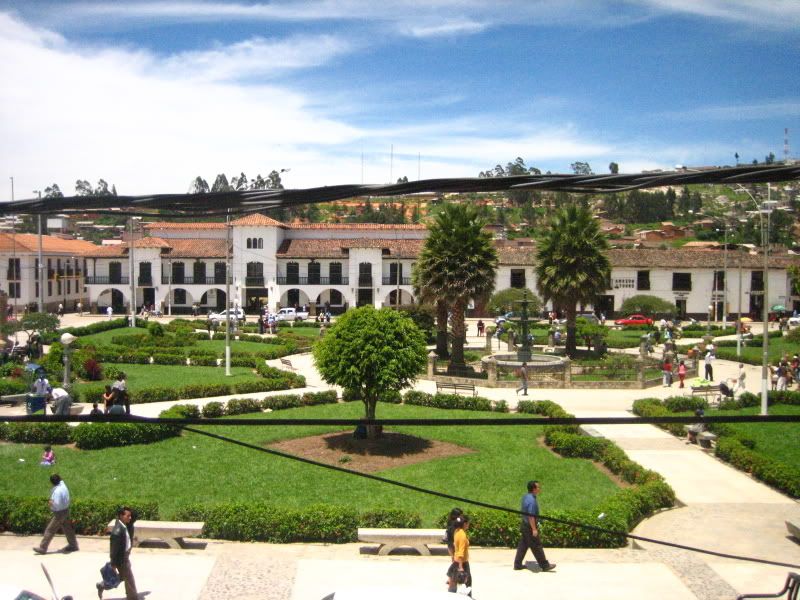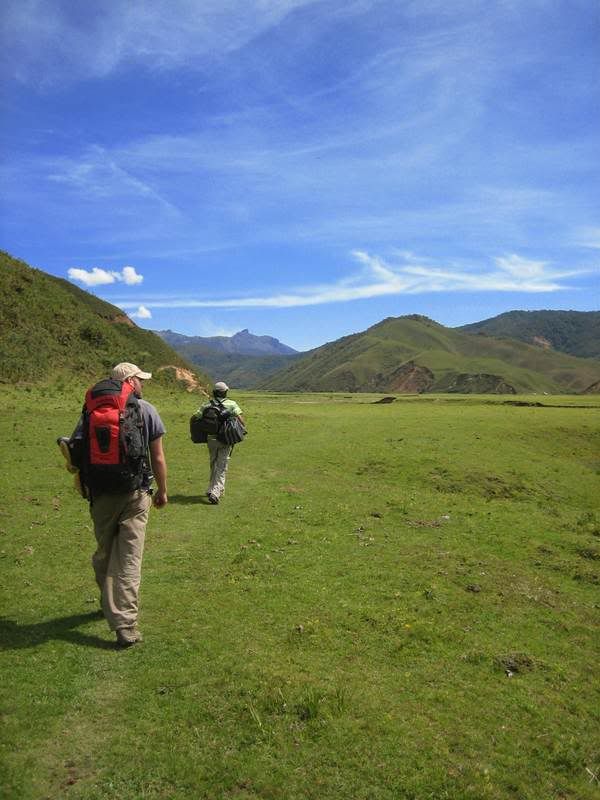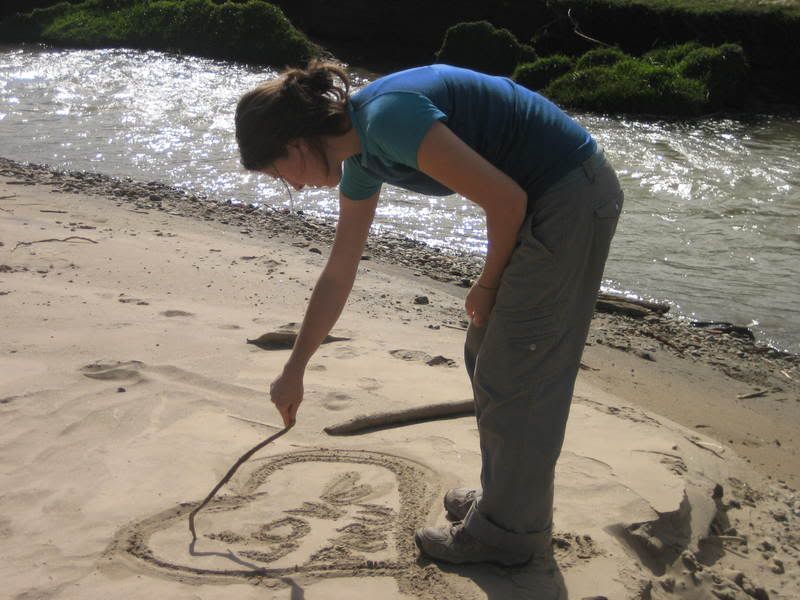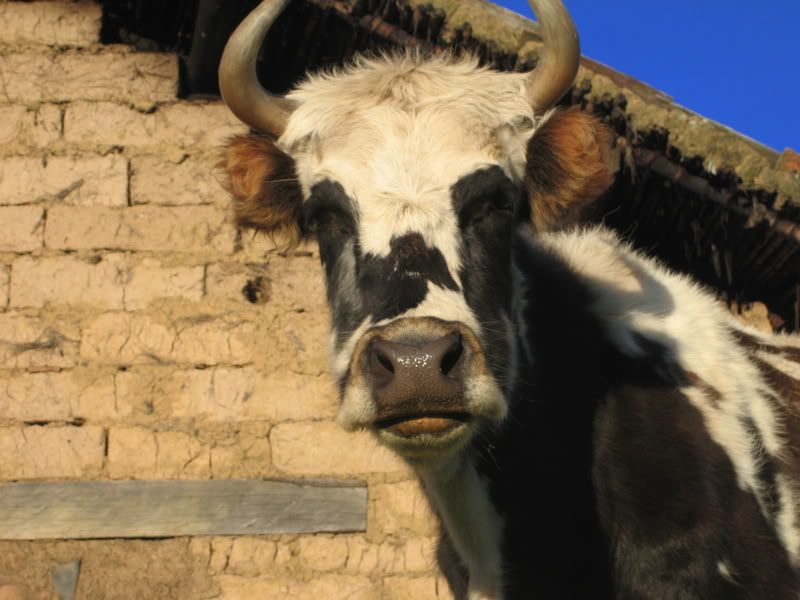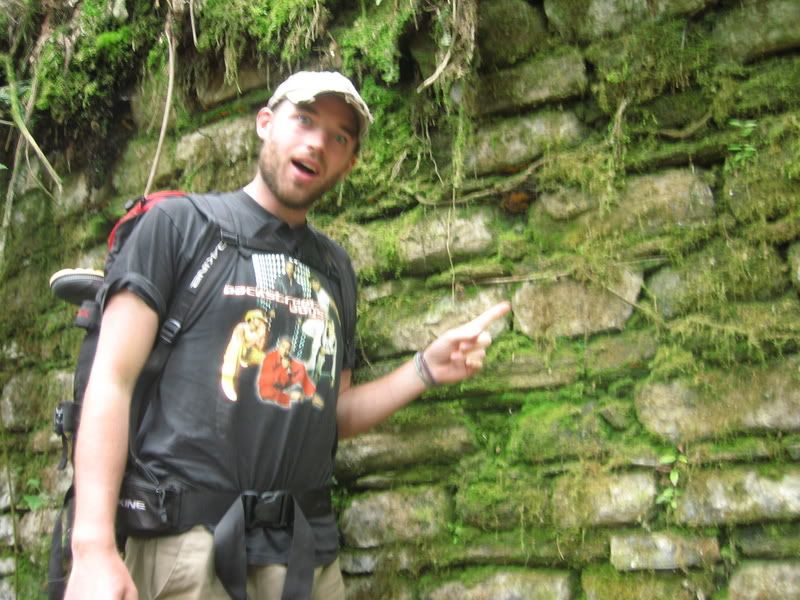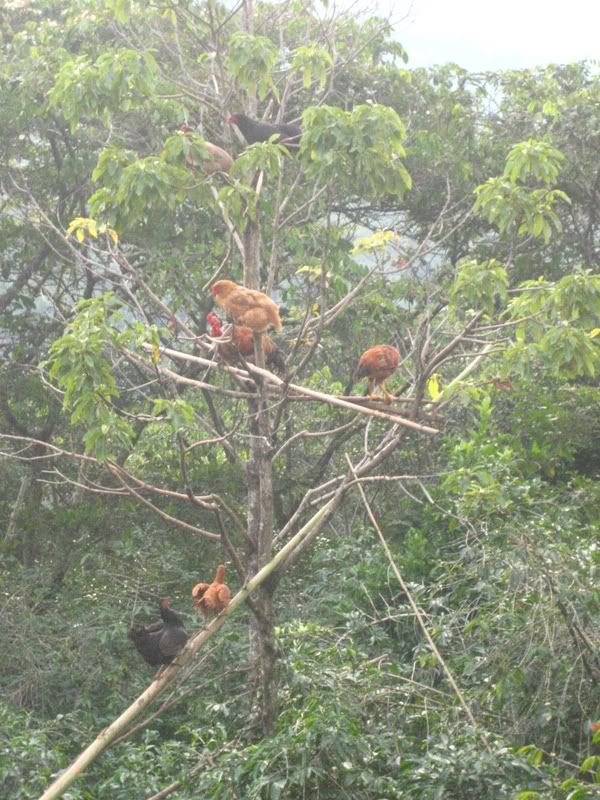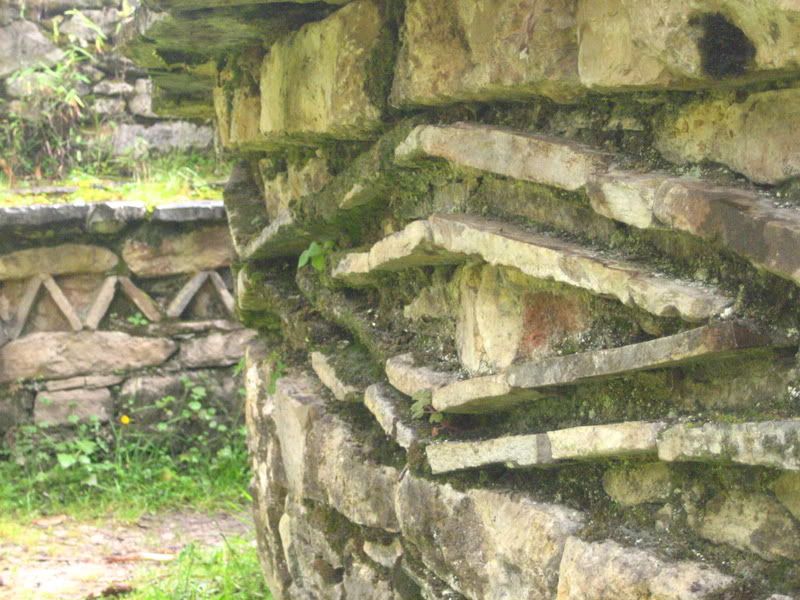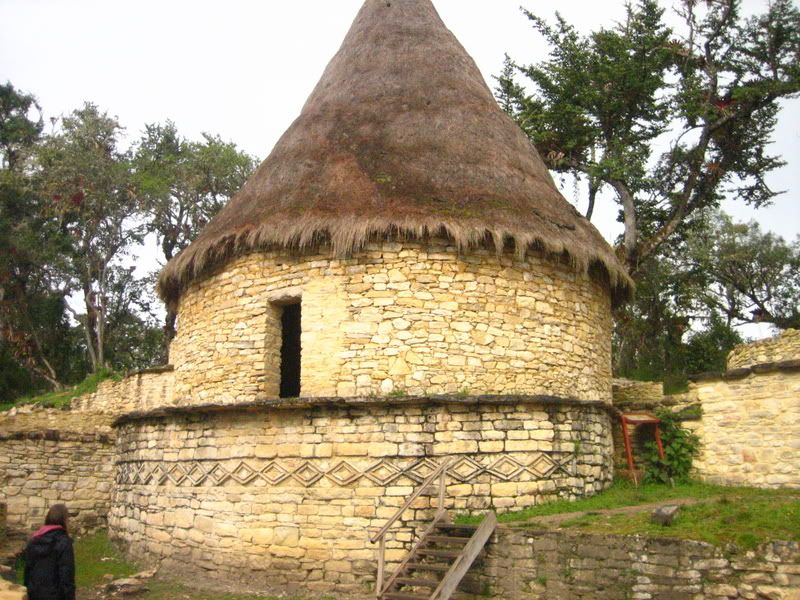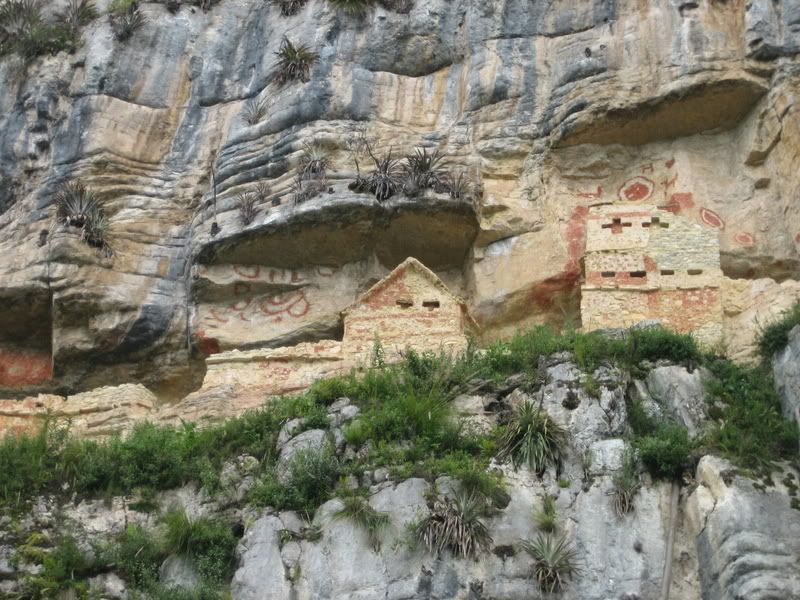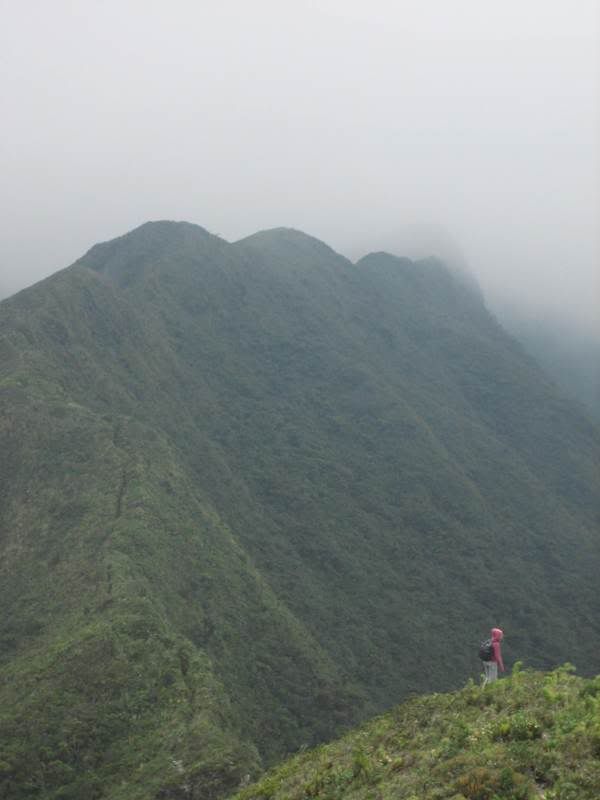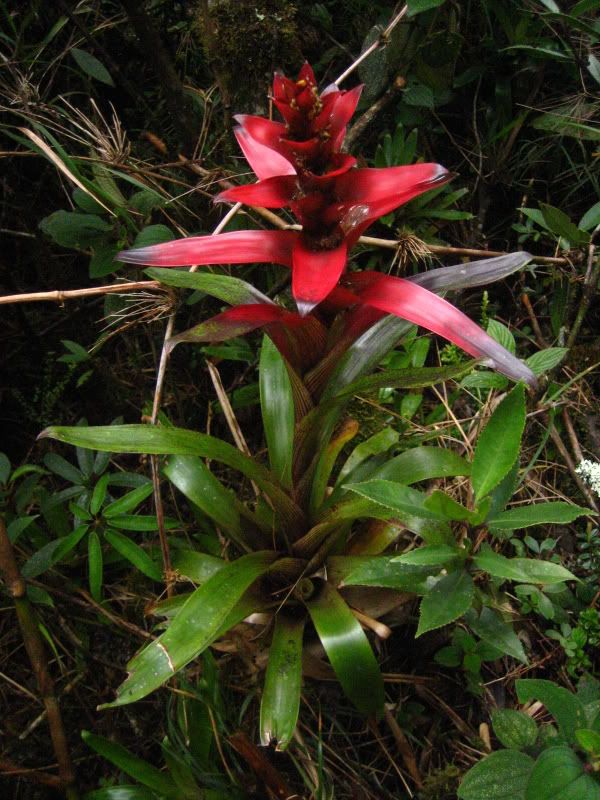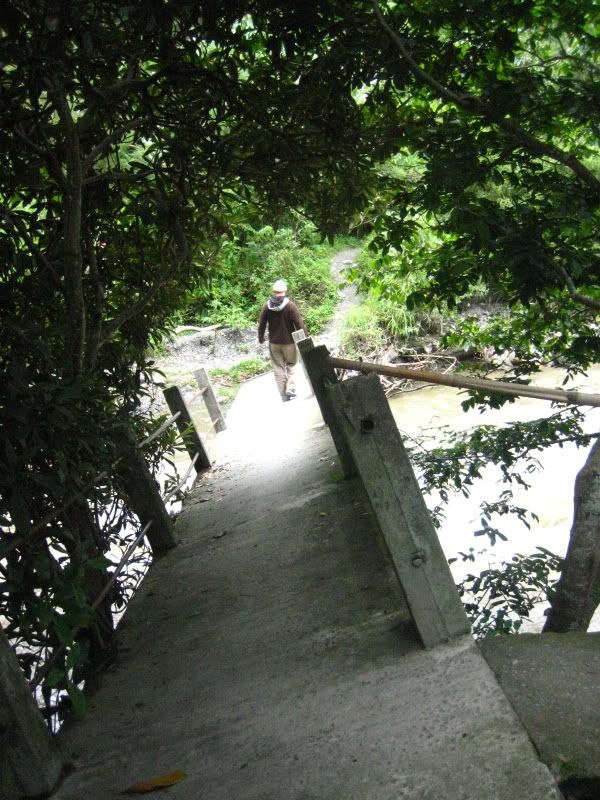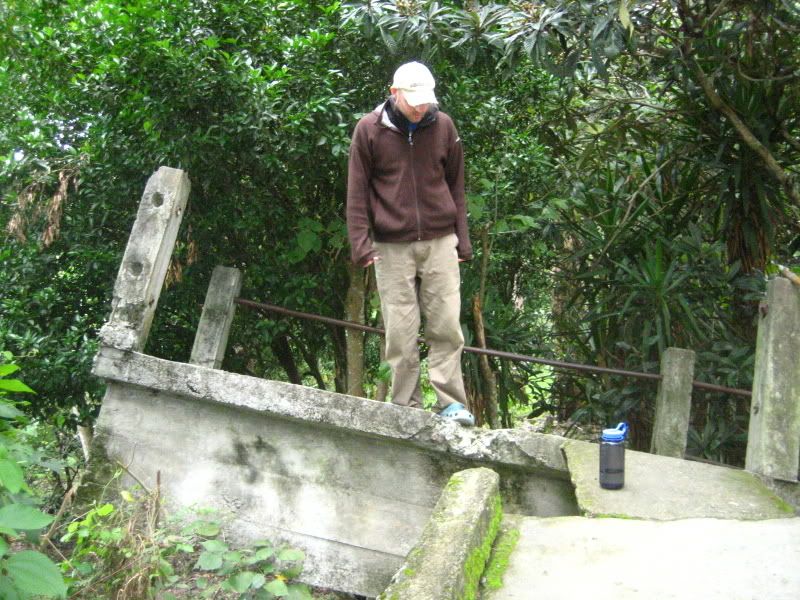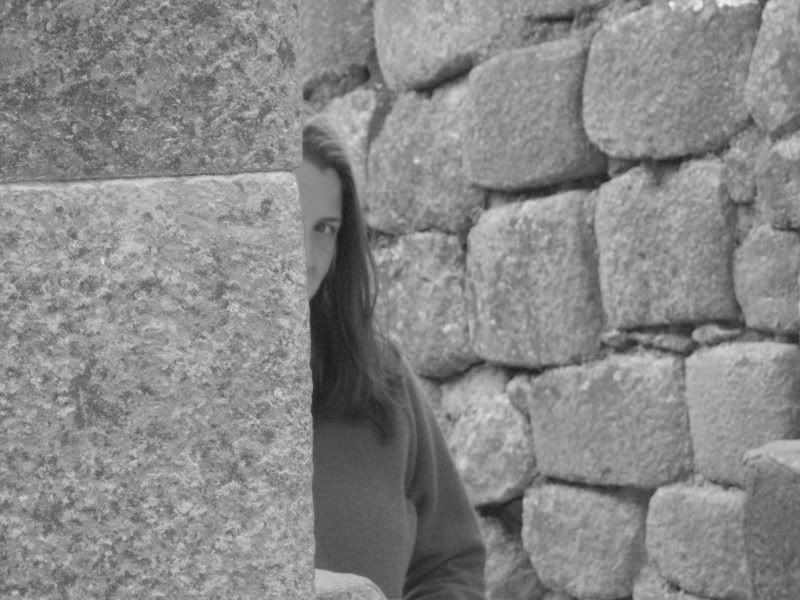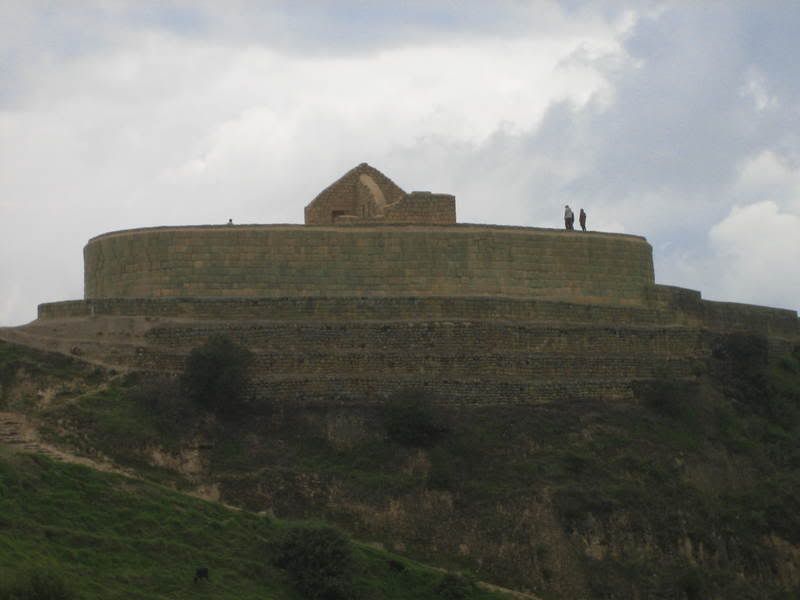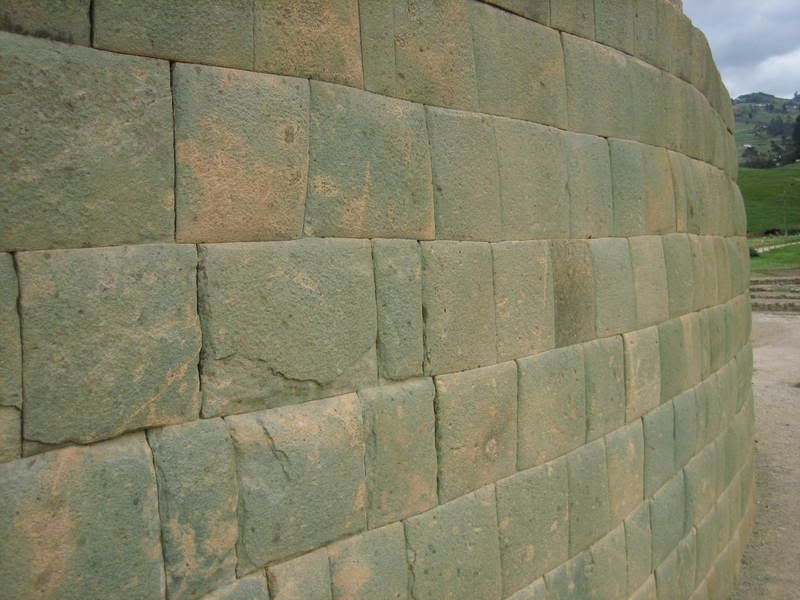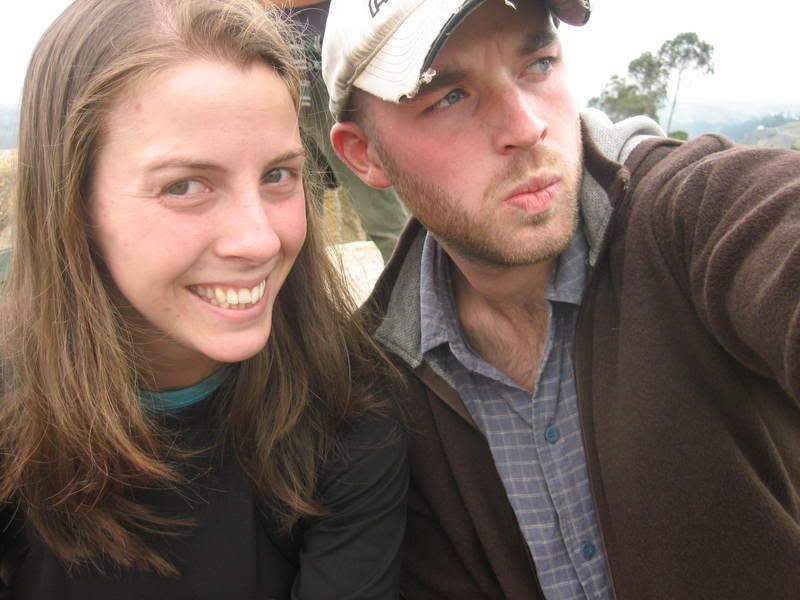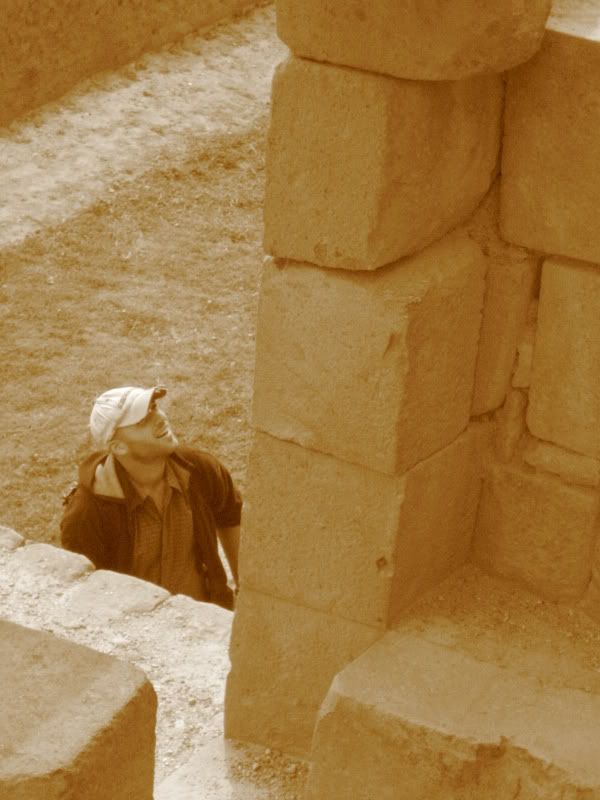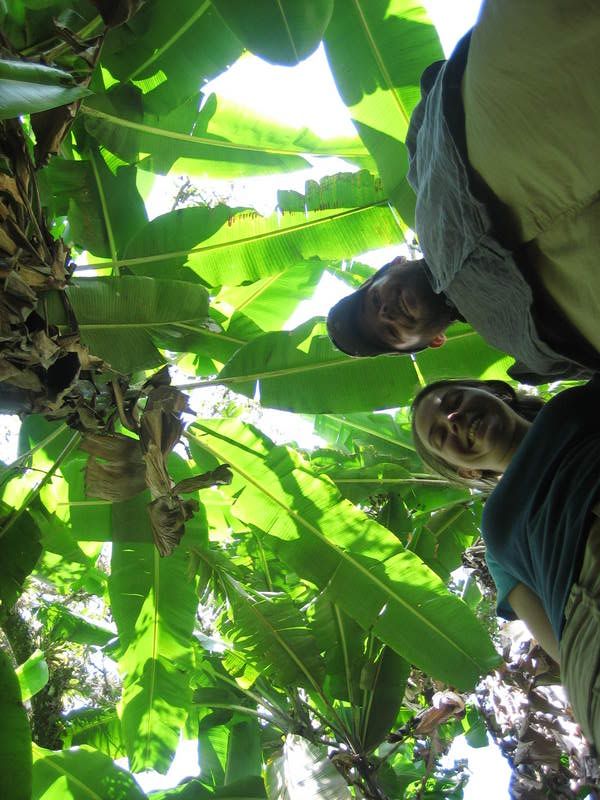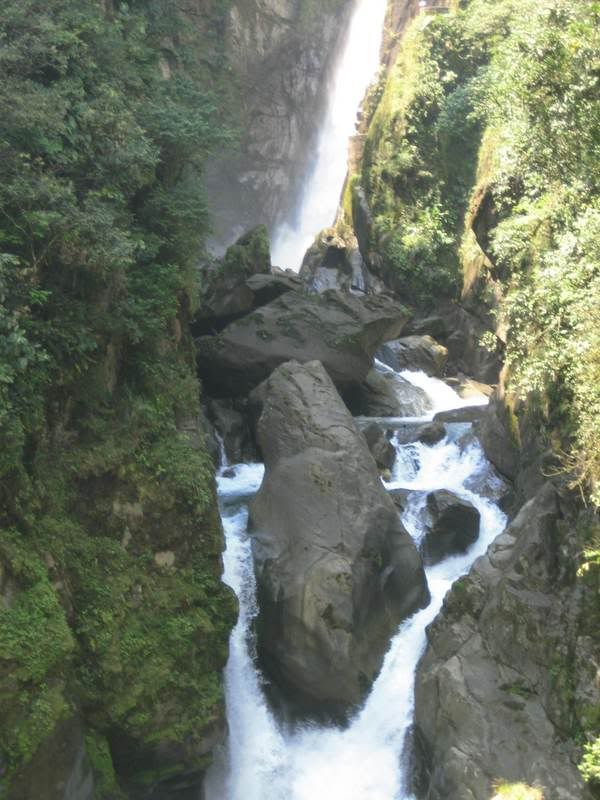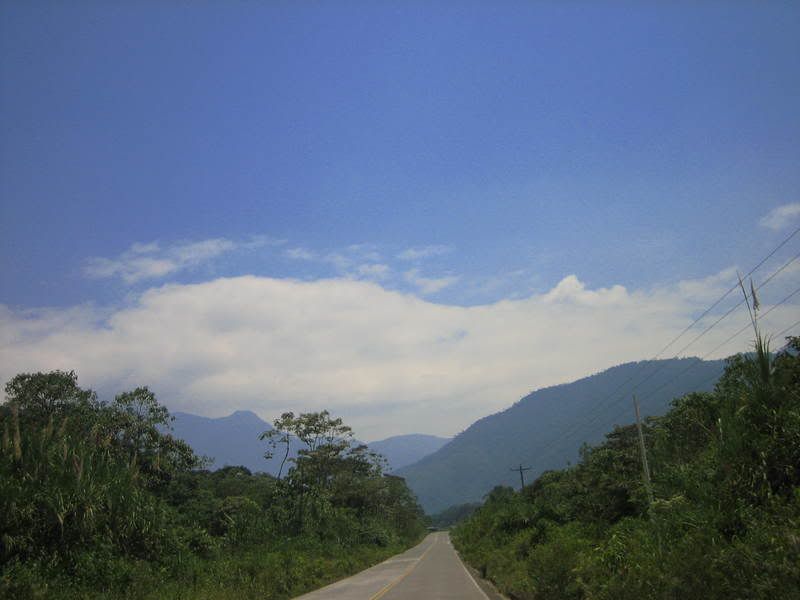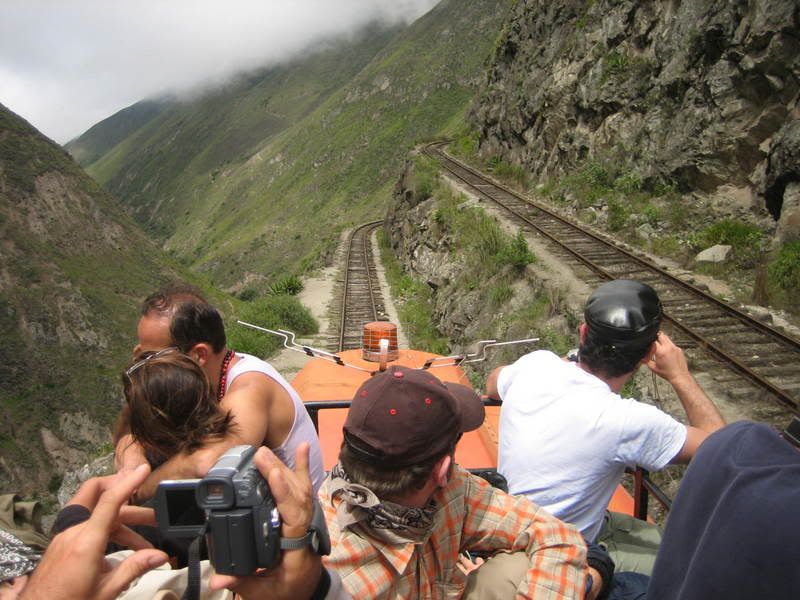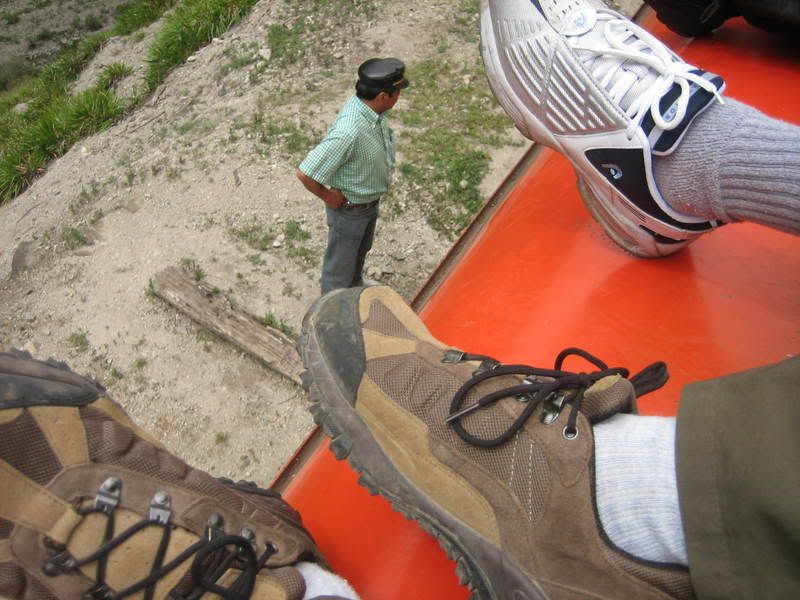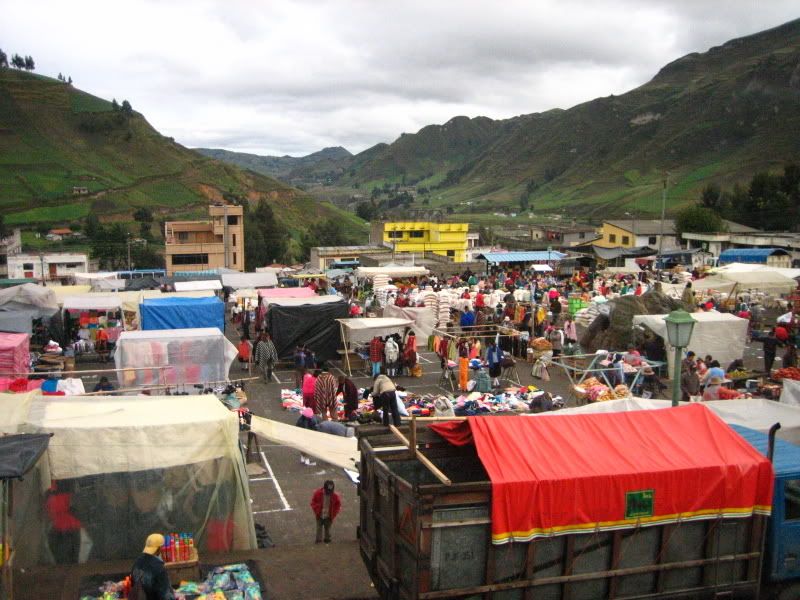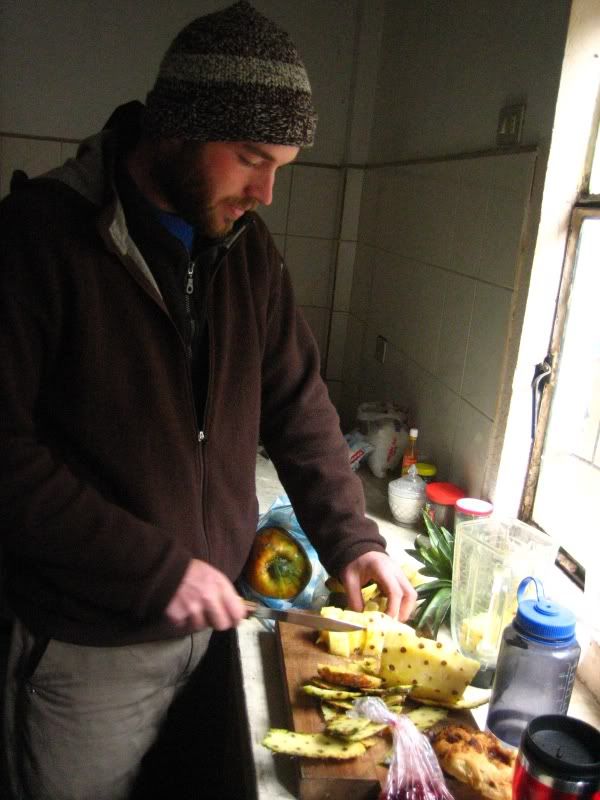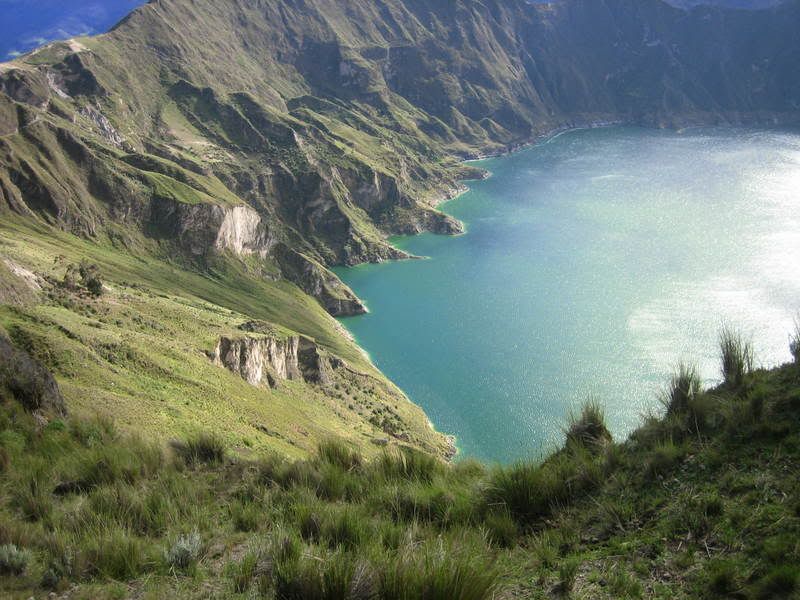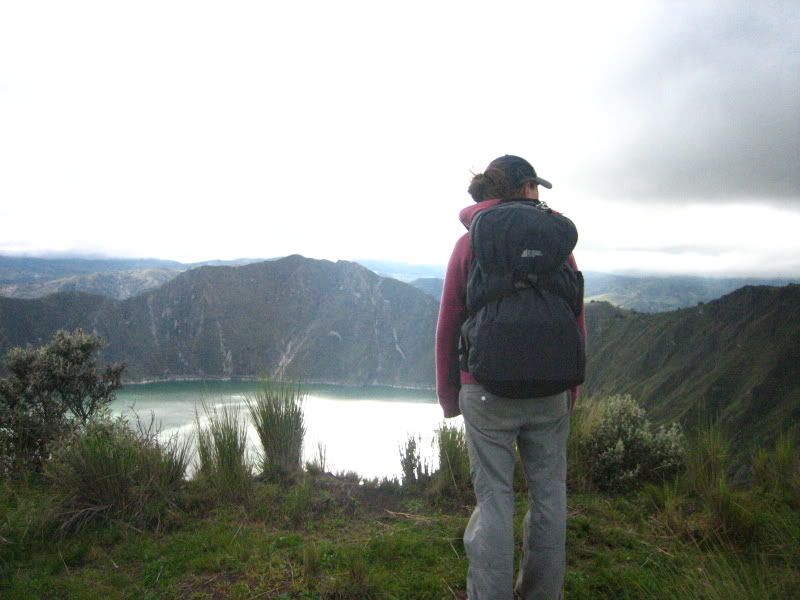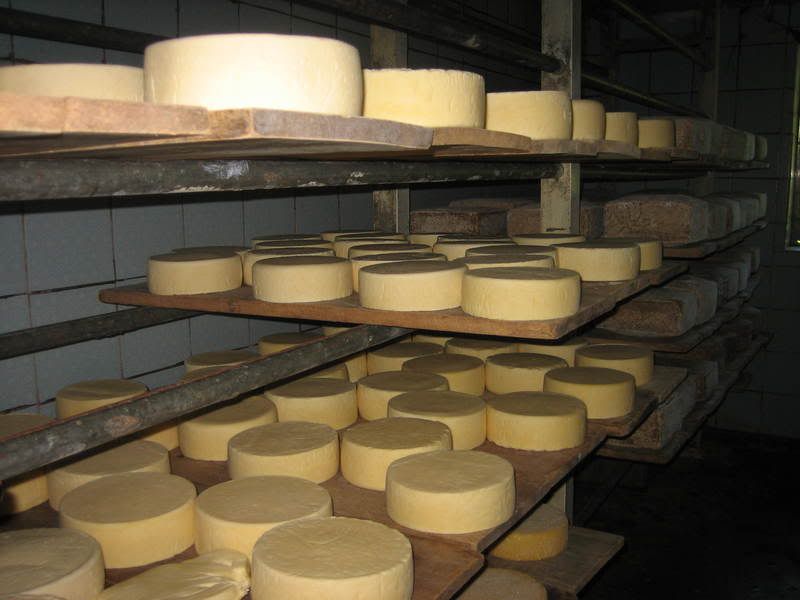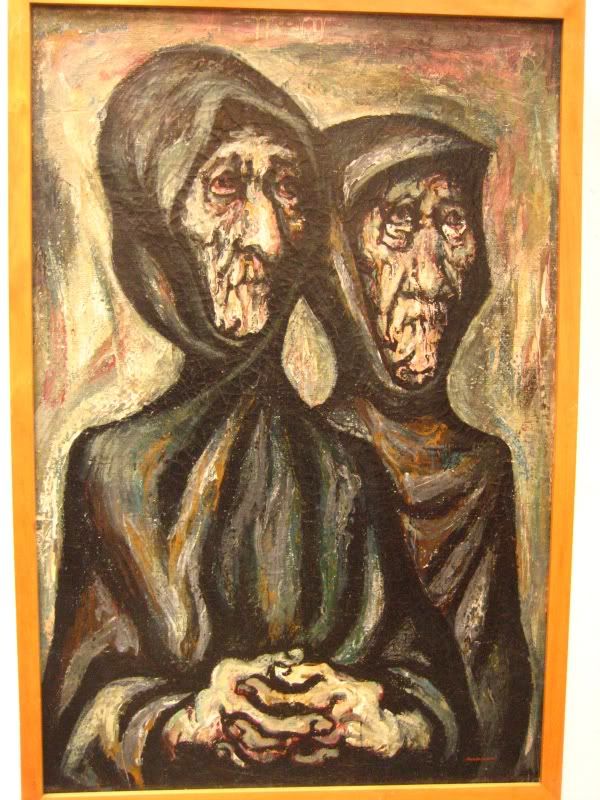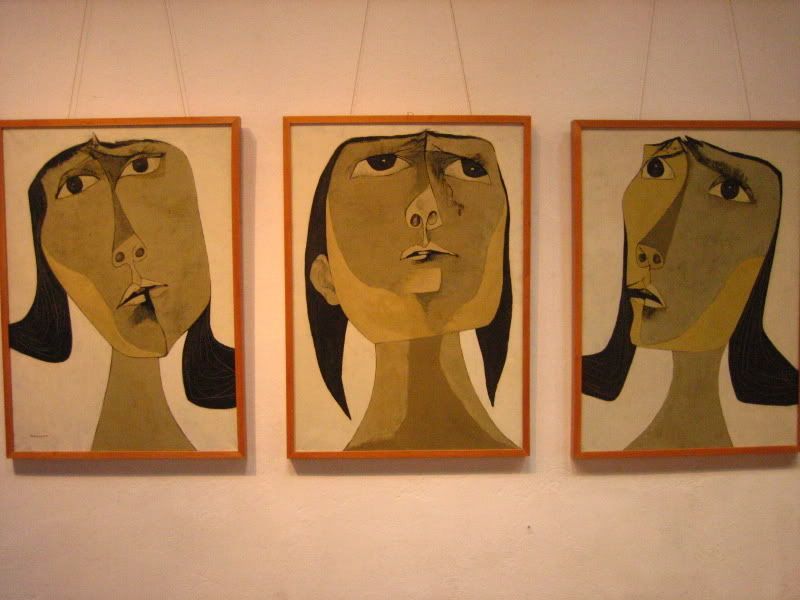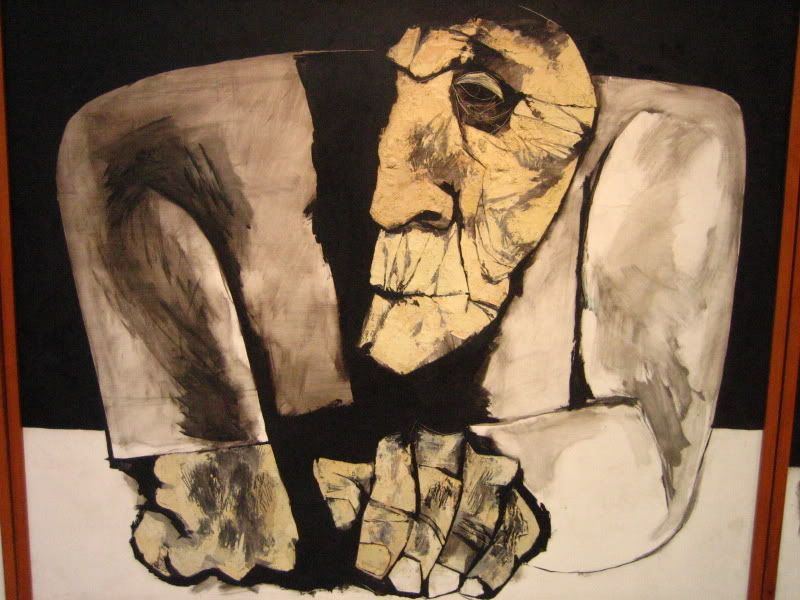El Laguna de los Condores Trek: Part 2
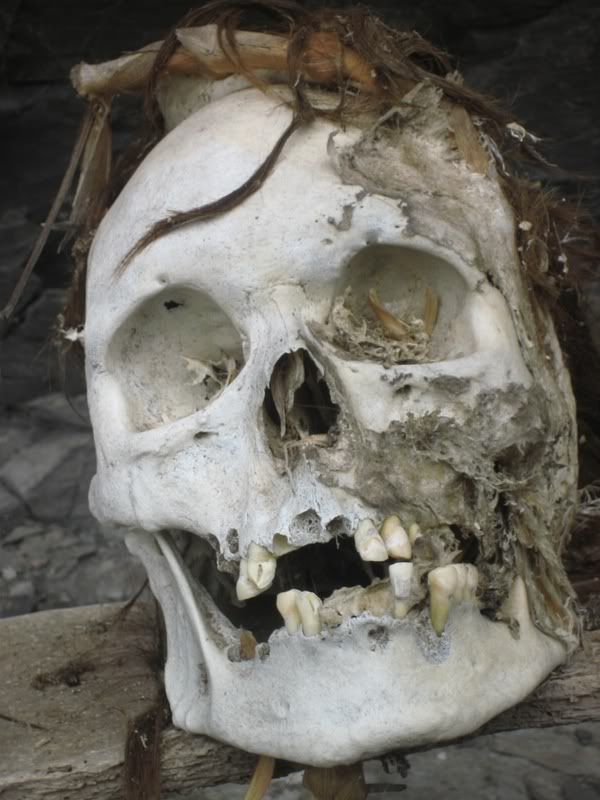 Most of you will know that feeling you get when you hear the rain falling on the roof, or tent, early in the morning. It's somewhere between depression and laziness, where all you want to do is pull the covers around your head and forget you heard it. We felt it around 6am on Sunday, just as our watch alarm went off. With the bathroom light on so we wouldn't hurt our sleepy eyes, we packed up our stuff, leaving behind a few things we didn't think we would need. Grabbed some breakfast around the corner from our hostal and met up with our new Guide.
Most of you will know that feeling you get when you hear the rain falling on the roof, or tent, early in the morning. It's somewhere between depression and laziness, where all you want to do is pull the covers around your head and forget you heard it. We felt it around 6am on Sunday, just as our watch alarm went off. With the bathroom light on so we wouldn't hurt our sleepy eyes, we packed up our stuff, leaving behind a few things we didn't think we would need. Grabbed some breakfast around the corner from our hostal and met up with our new Guide.
He had the horses all saddled up in the hostal courtyard, so we brought out our backpacks all ready, packed to perfection, the lightest we've had them yet, only to find out that they are too big for the horses. He wanted us to unpack our waterproof backpacks, stuff everything into thin plastic bags and then into woven saddle bags. I was looking up at the rain falling thinking about how nice and warm and dry the bed was right now. We switched over to the Peruvian way of tripping and hopped up into the saddles grumbling to ourselves inside our ridiculously looking ponchos.
For the last three days of our trek we decided to go see some Mausoleums that are located on a cliff above a Lake, a days ride from Leymebamba. They were created by the Chachapoyan culture that lived in the mountains around northern Peru before the Incas came and told them how to live (who in turn got told by the Spanish how to live). To get to El Laguna de Los Condores (Lake of the Condors) it's about a 9 hour ride/hike up a muddy trail through some beautiful country.
We rode out of Leymebamba on our horses early and because of the rain it was pretty quiet. It rained through most of the night so the trail was completely swamped. I haven't ridden many horses before, and the few times I did, was on flat dry trails. Needless to say the rocky, wet, muddy trail was a little bit nerve racking, especially after falling off a few days ago. After leaving and suffering through the gloomy morning, the day turned out to be allright. We crossed two very swollen rivers, climbed up to 3000m, peered down a hole that was supposedly 300m deep. We arrived at the Cabaña just after 5pm, thoroughly exhausted and ready for a sleep.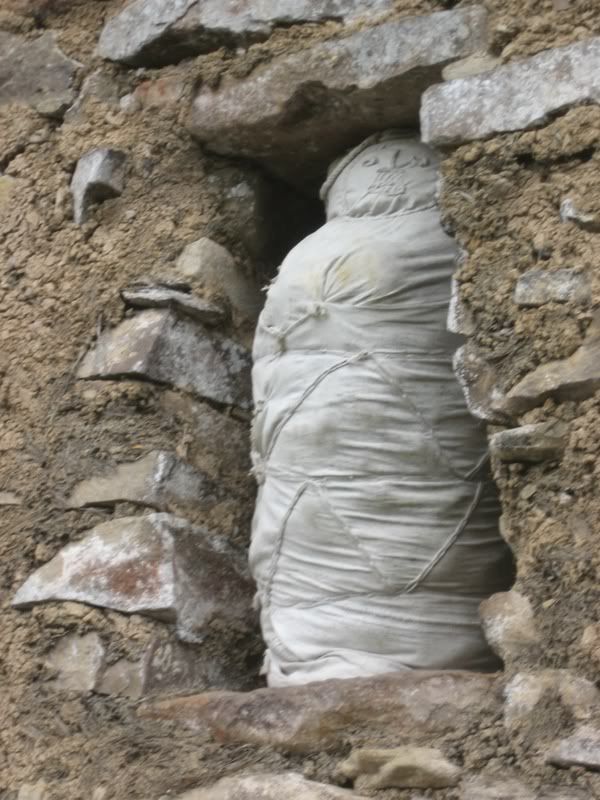
The Cabaña is on a slope just over the hill from the Laguna, surrounded by lush mountains. We peeled off our raingear and got into some warm clothes. It was getting dark, and the nights up in the mountains are pretty chilly, so we relaxed by the cooking fire and drank tea. Clement prepared some glorious spaghetti, and we bonded over the meal. Clement San Ignacio is a farmer from Leymebamba, a small town south of Chachapoyas by 3 hours on a very very bumpy road. He farms corn, wheat and potatoes mostly, and works as a guide when he can. He worked on the restoration of Kuelap for awhile, and has two children. He had just returned from another trek, and was leaving the next day with us, but his son didn't want him to go. Easily persuaded, his son caved when it became apparent that if he didn't work he wouldn't be able to buy chocolate anymore.
Also living at the Cabaña was a family, husband, wife and their son, who looked after the cows and sheep that grazed on the fields nearby. He works out there for 6 months, a long time to be so isolated from everyone. No phones, no electricity, no cars, no internet.... paradise no? We crawled into our bed under 5 blankets that were as heavy as lead and drifted off. The sleep was fairly restless, because of the cold, and because of the relentless barking of the dogs. They keep a few dogs on the ranch to scare off the foxes and pumas that try to eat the sheep. Not quite paradise afterall. We woke up on our own time with a light rain falling, drank some more tea to warmup. Breakfast was avocado and bread, so I tried explaining to Clement about porridge and how good it would be right now. We suited up in raingear and set out on our archeology hunt. It really felt like we were the ones discovering it for the first time, as Clement hacked through the bamboo on the trail there. Up sketchy(heh) ladders, over rivers, through cloudforest. We discovered ruins from a very large Chachapoyan city beside the Laguna, numbering three to four thousand citizens. The ruined houses are all round, except for a few rectangular ones that had been built by the Incas after conquering the area. The Chachapoyans built round for the strength since they used small stones. Most Inca buildings were constructed using larger carved blocks so were strong enough without needing to be round.
We woke up on our own time with a light rain falling, drank some more tea to warmup. Breakfast was avocado and bread, so I tried explaining to Clement about porridge and how good it would be right now. We suited up in raingear and set out on our archeology hunt. It really felt like we were the ones discovering it for the first time, as Clement hacked through the bamboo on the trail there. Up sketchy(heh) ladders, over rivers, through cloudforest. We discovered ruins from a very large Chachapoyan city beside the Laguna, numbering three to four thousand citizens. The ruined houses are all round, except for a few rectangular ones that had been built by the Incas after conquering the area. The Chachapoyans built round for the strength since they used small stones. Most Inca buildings were constructed using larger carved blocks so were strong enough without needing to be round.
After walking for about 2 hours and hacking our way through the jungle we arrived at the Mausoleum site. It's about 30 meters up from the lake, and situated under a very large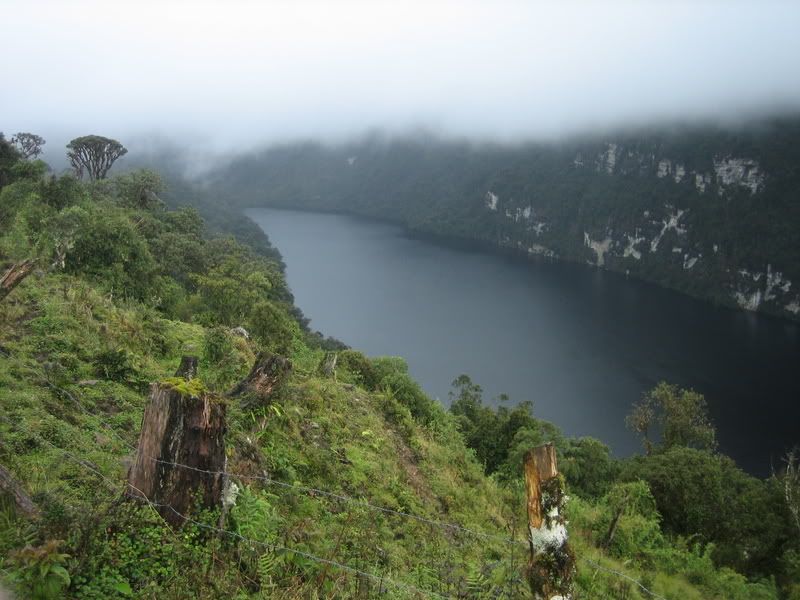 overhang that protects it from the elements. There were a number of different mausoleums that contained about 30-40 mummies in each one. Back in 1997 archeologists excavated the site and transported over 200 mummies to a museum in Leymebamba. The site is still in fairly good shape, and they left a few artifacts behind for us diehards. The walls were painted with pictures of animals and spirals that might have meant longevity. We sat and ate lunch with a few skulls that still remain at the site, one still had hair. It was amazing to see how well preserved most of the stuff was. There was cloth that was used to wrap the mummies, rope made from a plant, and some wood carvings. They think that the Chachapoyans believed in reincarnation, and that the closer you were to the sun and heaven the better chance you had of getting a good gig in the next life. That's the reason they built these crazy tombs up on hard to get to cliffs. Most of the tombs overlooked cities or faced towards the sun as it set or rose. I can only hope my kids put me somewhere cool when I die.
overhang that protects it from the elements. There were a number of different mausoleums that contained about 30-40 mummies in each one. Back in 1997 archeologists excavated the site and transported over 200 mummies to a museum in Leymebamba. The site is still in fairly good shape, and they left a few artifacts behind for us diehards. The walls were painted with pictures of animals and spirals that might have meant longevity. We sat and ate lunch with a few skulls that still remain at the site, one still had hair. It was amazing to see how well preserved most of the stuff was. There was cloth that was used to wrap the mummies, rope made from a plant, and some wood carvings. They think that the Chachapoyans believed in reincarnation, and that the closer you were to the sun and heaven the better chance you had of getting a good gig in the next life. That's the reason they built these crazy tombs up on hard to get to cliffs. Most of the tombs overlooked cities or faced towards the sun as it set or rose. I can only hope my kids put me somewhere cool when I die.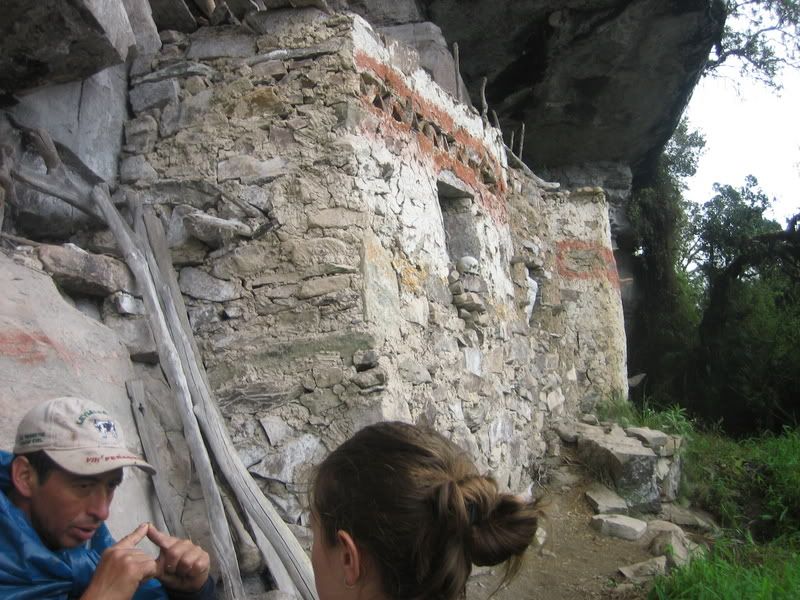
Relunctantly we left and hiked back haunted by thoughts of ancient peoples. It's definitely not comfortable up here, or easy to get to, and it's not much fun unless you can make it, but it's really very cool. The ride back to Leymebamba was a little drier, the rain had let up a little bit and the creeks we crossed looked nothing like the raging rivers of two days ago. We arrived at the Museum around 3pm and the sun was shining without even a hint of guilt. It would have been nice to see it yesterday. The museum itself was full of pottery and artifacts recovered from the Laguna de los Condores tombs, and was very well laid out. I couldn't help but feel a little disinterested after actually travelling to the site and seeing the ammount of work and devotion that went into the Mausoleums. The best part of the museum was seeing the room that had shelves and shelves of mummies, all wrapped up. Some of the wrappings had deteriorated or been removed and you could look at someone maybe 1000 years dead looking back at you. Creepy.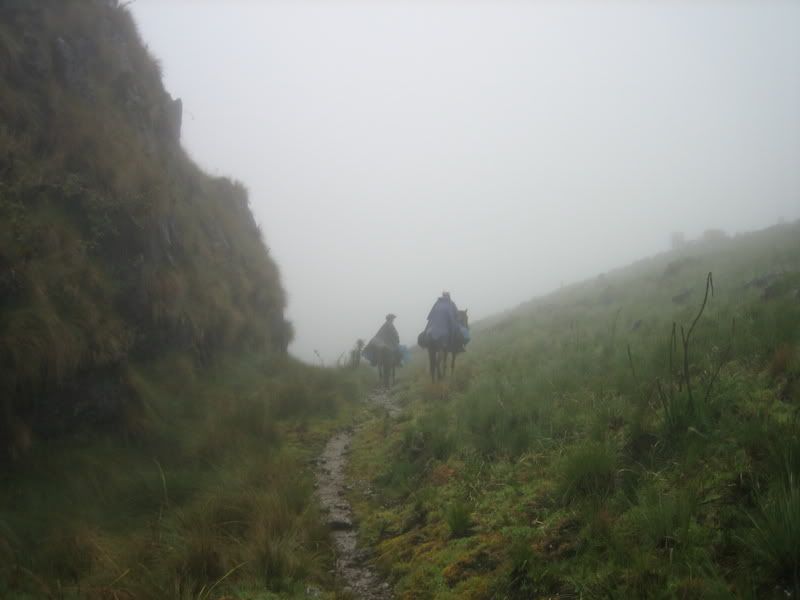 It was really worthwhile week, we learned a ton, saw even more and got to practice our spanish talking to our guides. There wasn't another tourist to be seen the whole time, and most of the registar books showed lists of peruvian tourists. It's neat to learn so much about a culture that lived here that isn't Inca, since that's all we ever hear about in Canada. We are back in Chachapoyas now, after a long and very very bumpy road from Leymebamba. Taking it easy today, updating our epic, and we head out tonight on a overnight bus for the coast, where it will hopefully be sunny, warm, and perhaps a hammock.
It was really worthwhile week, we learned a ton, saw even more and got to practice our spanish talking to our guides. There wasn't another tourist to be seen the whole time, and most of the registar books showed lists of peruvian tourists. It's neat to learn so much about a culture that lived here that isn't Inca, since that's all we ever hear about in Canada. We are back in Chachapoyas now, after a long and very very bumpy road from Leymebamba. Taking it easy today, updating our epic, and we head out tonight on a overnight bus for the coast, where it will hopefully be sunny, warm, and perhaps a hammock.
Cheers.
fotos to follow...
